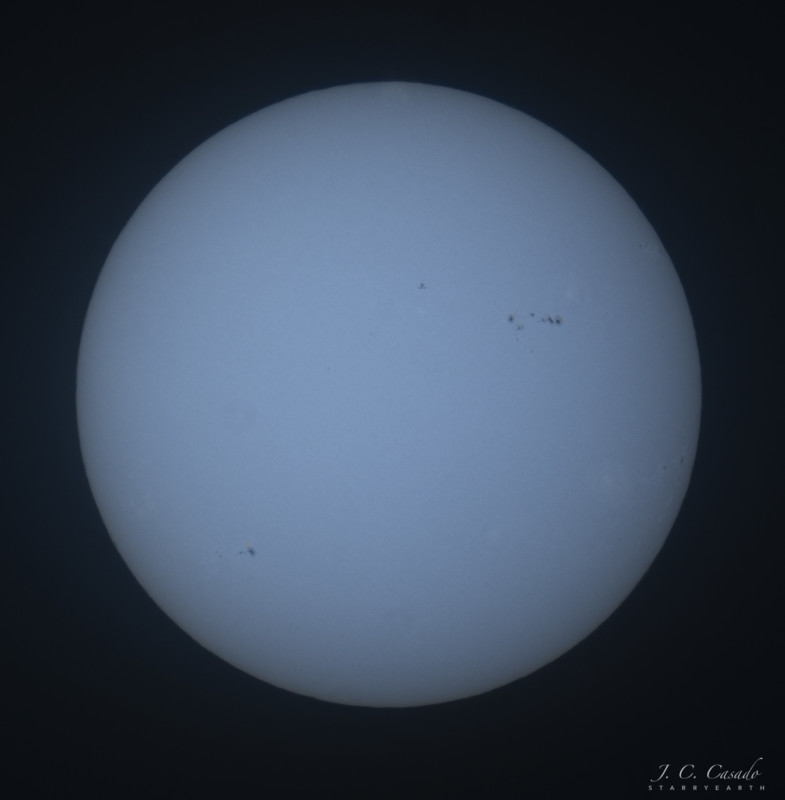Photo of Space Station Crossing the Sun Nabbed in Just Half a Second
![]()
Juan Carlos Casado photographed the Tiangong Space Station (TSS) passing in front of the Sun capturing the outline of the spacecraft’s modules and solar panels.
Casado spent two weeks preparing to capture the Chinese TSS, which is still undergoing construction, from his backyard in Figueres, Spain.
Casado tells PetaPixel he had to know down to the second what time the TSS would be silhouetted by Earth’s nearest star.
“Passage predictions for space stations like Tiangong or ISS can be obtained from the transit-finder.com website,” he tells says.
“I had known that this passage would be observable from my house for about two weeks beforehand. As the day of the passage approached, the time and geographic location had to be recalculated, since the orbital parameters of the space stations vary.”
![]()
Casado used the Time app, which connects simultaneously to several atomic clock servers, and typically ensures accuracy within three-hundredths of a second or better.
Image Capture
“Having a telescope with good optics and whose focal length in combination with the resolution of the camera would allow me to capture details on the spacecraft, whose apparent dimension was only about seven”,” he explains.
Casado has a Russian telescope, the Newton-Maksutv which has a 152mm aperture and a 900mm focal length attached to a Sony A7R III.
“It has a theoretical resolution of one”, which in theory (in ideal atmospheric conditions) would allow me to capture details of the spacecraft,” Casado explains.
The Spaniard then had to think about the exposure time as the transit through the solar disk would be under a second — a fast shutter speed was required.
“To shoot with a fast shutter speed the solar image must be sufficiently bright, i.e. the solar filter must not be too dense and need a relatively fast telescope,” he says.
“With an aperture photographic filter, I was able to shoot at a speed of 1/3200 second, which was well within the theoretical resolution I could obtain (with the ISO of the camera as low as possible).”
Casado had to start shooting a long burst in RAW before the scheduled transit time of the TSS.
“My camera along with a high-speed recording card allows for bursts of 10 frames per second for several seconds,” he explains.
“In total there were about 130 pictures, six of which show Tiangong, although the one on the left edge only shows a fragment of the solar panel.”
With all the control details in place, the one thing Casado could not account for was the weather. The forecast that day was for cloudy weather which it was but the astrophotographer got a slick of lunch.
“A few minutes before the Tiangong’s passage the sky miraculously cleared up and I was able to make the observation.”

For the final image, Casado combined the images to obtain a higher resolution as well as to show the path of the TSS.
“In the image processing, I made conventional adjustments (color balance, contrast) and use wavelets to improve the details.”
Space Station Under Construction
The TSS is nearing completion and will become the only independent space station, unlike the International Space Station (ISS) which is a multilateral effort.
On July 24, China launched a 23-tonne research lab module to Tiangong, which means “Heavenly Place”, and the country expects to carry out biological and life science research.
Tiangong will have its own power, propulsion, life support systems, and living quarters. It is also designed to provide refueling power to China’s upcoming space telescope, called Xuntian.
Astrophotographer
Casado travels extensively to capture natural phenomena and recently published a book entitled Astrofotografía Viajera, which is available here.
More of his work can be found on Flickr and Instagram.
Image credits: All photos by Juan Carlos Casado.